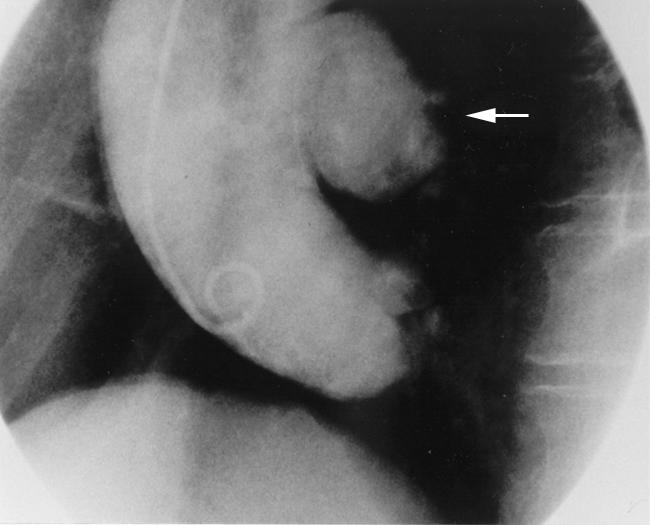A 78‐year‐old woman, with a longstanding history of hypertension, was referred to our institution for a scheduled cardiac catheterisation because of an atypical chest pain and an electrocardiographically positive stress test. The coronary angiogram revealed atherosclerotic coronary vessels without any significant stenosis. For clarification of her clinical syndrome aortography was performed, portraying an enormous saccular aneurysm of the posterior wall of the ascending aorta (see panel). The chest x ray was unremarkable while concomitant aortic valve disease was not present. The nature of this very large aneurysm, however, remained to be determined. Her past history excluded any injury. It was questionable if hypertension alone could explain this localised finding, as there was no diffuse dilatation of the aorta and no aortic valve disease that hypertension primarily enhances. Detailed questioning of the patient's history brought to light a successfully treated Brucella mellitensis infection a couple of years previously. Taking into account the localised character of the saccular aneurysm, the brucella infection, although rare, could be the major aetiologic component of this lesion. Since the risk of rupture and dissection was high, aneurysmectomy was scheduled without delay. Histopathological examination of the excised tissue verified the mycotic nature of the aneurysm and tissue PCR revealed the presence of Brucella mellitensis DNA in the lesion. At six months follow‐up, the patient was doing well and had no symptoms.



